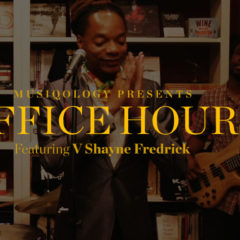There’s often a fine line to walk between pathology and purpose when it comes to writing about issues of race and anti-black racism. Responsible writers (particularly non-black allies) are charged with speaking to the realities of inequity and mistreatment without basking in the lurid details of enslavement and its after-echoes. We can and should write about the horrors of racism, but that can never come at the expense of rest of the emotional spectrum. Critique need not come only from one direction.
This is why a cultural text like Ryan Coogler’s Black Panther is so important (and why it has exploded to the degree it has on social media). Set to release this weekend to sold-out theaters around the country, the film tells the story of a mythical, undiscovered African nation called Wakanda and its leader, the titular superhero. Wakanda is a past and present vision—an African nation untouched by the evils of the trans-Atlantic slave trade. “This is all part of a tradition of unrestrained celebration and joy that we have come to rely on for our spiritual survival,” Carvell Wallace writes in a powerful New York Times feature about the upcoming film that discusses its liberatory and Afrofuturistic vision. “We know that there is no end to the reminders that our lives, our hearts, our personhoods are expendable.” Those reminders abound, but art gives an important reminder that while the Sunken Place of Jordan Peele’s Get Out is powerful and impactful, it is not all encompassing.
Sometimes art lives somewhere else and gives us a speculative vision of what that elsewhere might be like. Sometimes it’s dignified despite indignities heaped upon it. Sometimes it’s relaxed despite tensions of a white supremacist world. Sometimes it’s buoyant despite weights pulling it down.
“If All I Was Was Black” by the soul and gospel legend Mavis Staples, which released this week in support of a full-length album of the same title, is all of these things. The video depicts Staples sitting calmly and comfortably in a coffee shop while Confederate monuments celebrating those who fought to devalue her complete humanity disappear from view. It similarly tears down the monolith of blackness as melancholy: If All I Was Was Black,” she asks, “Don’t you wanna know me more than that?”
Staples, who came to fame as a member of the Chicago family group The Staple Singers in the Sixties and Seventies with message songs like “Long Walk to D.C.” and “When Will We Get Paid?”, helped soundtrack the Civil Rights movement. One of their iconic songs, “I’ll Take You There,” depicts an accessible alternative place that doesn’t require spaceships or technological wizardry of George Clinton and the other Afrofuturists. I know a place/Ain’t nobody cryin’ /Ain’t nobody worried,” she sings. All you need to get to a better place, the song suggests, is Mavis’s breathy boast. She’ll get you where you need to go.
Aided by the Chicago songwriter and frontman of the rock group Wilco, Jeff Tweedy, Mavis Staples is in the midst of a career renaissance which began with 2010’s You Are Not Alone, with full-lengths in 2013, 2016, and now, If All I Was Was Black. “I’ve always thought of art as a political statement in and of itself—that it was enough to be on the side of creation and not destruction,” Tweedy says of his work with Staples. “But there is something that feels complicit at this moment in time about not facing what is happening in this country head on.”
But what is so powerful and endearing about Staples’s work is its quiet passion and determination—resolve honed after decades of work. There’s a way for her to meet injustice head-on without melodrama. Instead, she sits calmly and reflectively at a wooden bench as the sun shines through a window onto her face and statues atop Confederate monuments are replaced by live African Americans or by nothing altogether.
In some ways, the protagonist of “If All I Was Was Black” isn’t even Staples at all, but instead a young woman played by Keah Moffett, who stumbles upon a community of people admiring a new monument that, in a twist, is Moffett herself. It’s a simple vision of a better future and a reminder of alternative ways to approach our critical work.

 Share On Facebook
Share On Facebook Tweet It
Tweet It








